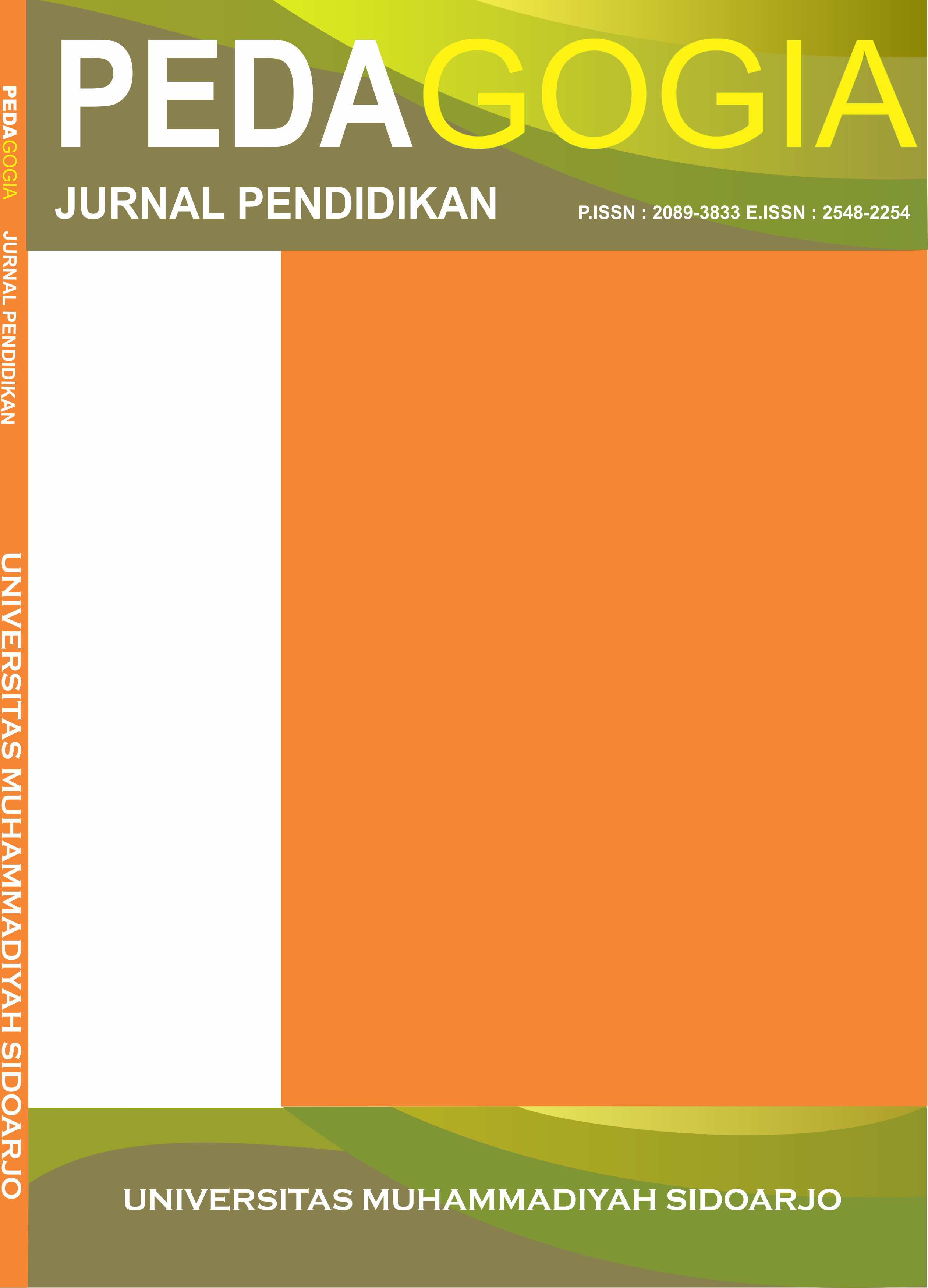Kajian Minat Membaca Siswa Terhadap Karya Sastra
Study of Students' Reading Interest in Literary Works
DOI:
https://doi.org/10.21070/pedagogia.v6i1.608Keywords:
Reading Interest, Children’s Literature, Primary EducationAbstract
Efforts to increase interest in reading are necessary to cultivate children's interest in reading, as a habit from children till adults. This research is to know the reading interests of students to literature, it is expected that we can provide facilities to children to choose books children's literature that became a favorite to increase reading interests. The study was conducted on a fifth grade students of SD Muhammadiyah 1 Sidoarjo which aims to find out how the students' interest in reading literature. This research uses descriptive qualitative design, with the population students of SD Muhammadiyah 1 Sidoarjo. The sample in this study is a fifth grade elementary school student SD Muhammadiyah 1 Sidoarjo. Collecting data in this study are using methods or techniques of questionnaires, interviews and observation. The results of the study most students like to read picture books or comics, with ownership of books 6-15 books. The students spent time reading about 0-60 minutes a day.
References
Koswara, E. ed. 1998. Dinamika Informasi Dalam Era Global. Bandung: PT.Remaja Rosdakarya
Purnomo, Hinda. 1998. Pembinaan Minat Baca di Sekolah Menengah Umum. Jakarta: Departemen Pendidikan dan Kebudayaan.
Rahim, Farida. 2008. Pengajaran Membaca di Sekolah Dasar. Jakarta : Bumi Aksara
Rahman, Abd. 1985. Minat Baca SD di Jawa Timur. Pusat Pembinaan dan Pengembangan Bahasa. Jakarta: Depdikbud.
Ratnasari, Yunita. (2011). Pengaruh Pergaulan Teman Sebaya Terhadap Minat Baca Siswa Kelas V SD Negeri Bojongsari 1 Kabupaten Purbalingga. Skripsi Sarjana pada FIP UNY Yogyakarta.
Saxby, Maurice. 1991. “The Gift Wings: The Value of Literature to Children”, dalam Maurice Saxby and Gordon Winch (ed). Give Them Wings, The Experience of Children’s Literature. Melbourne: The mkacmillan Company.
Tarigan, H., G. (1995). Dasar-Dasar Psikosastra. Bandung: Angkasa.
Downloads
Published
How to Cite
Issue
Section
License
Authors retain copyright and grant the journal right of first publication with the work simultaneously licensed under a Creative Commons Attribution 4.0 International License that allows others to share the work with an acknowledgement of the work's authorship and initial publication in this journal.








